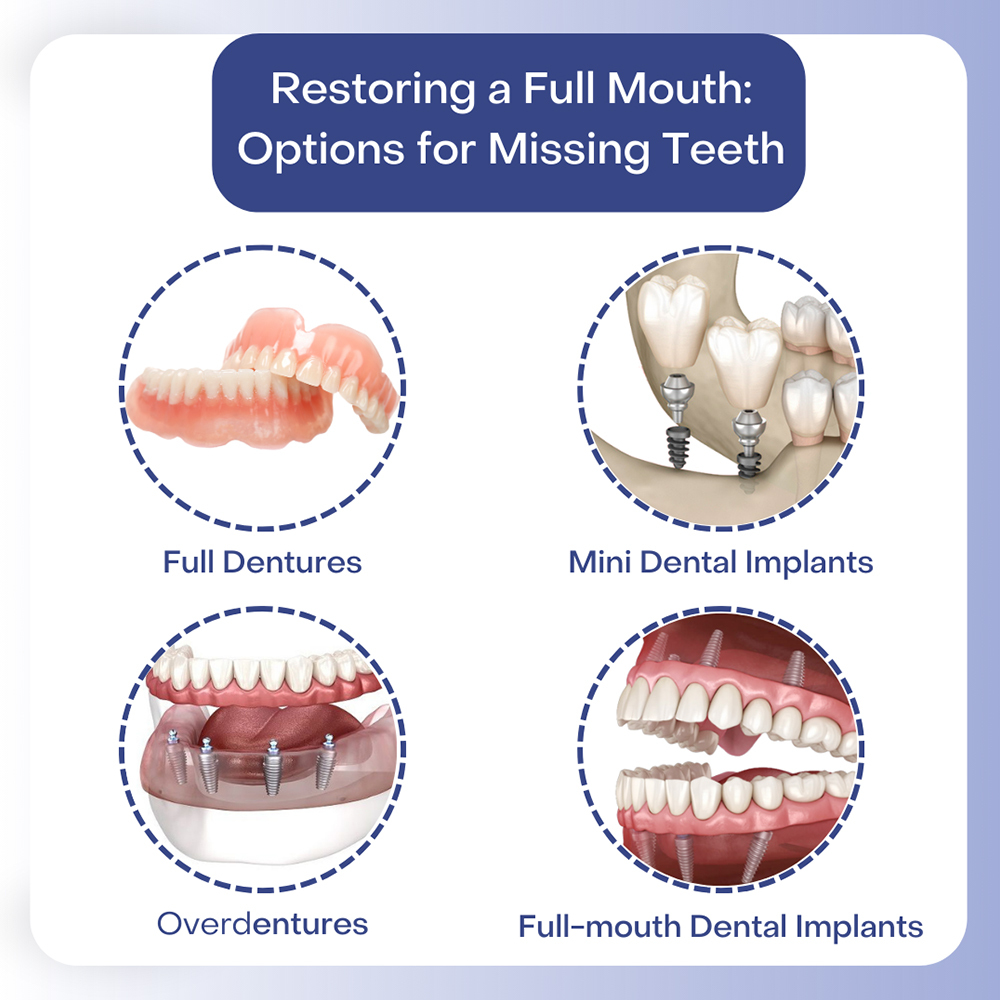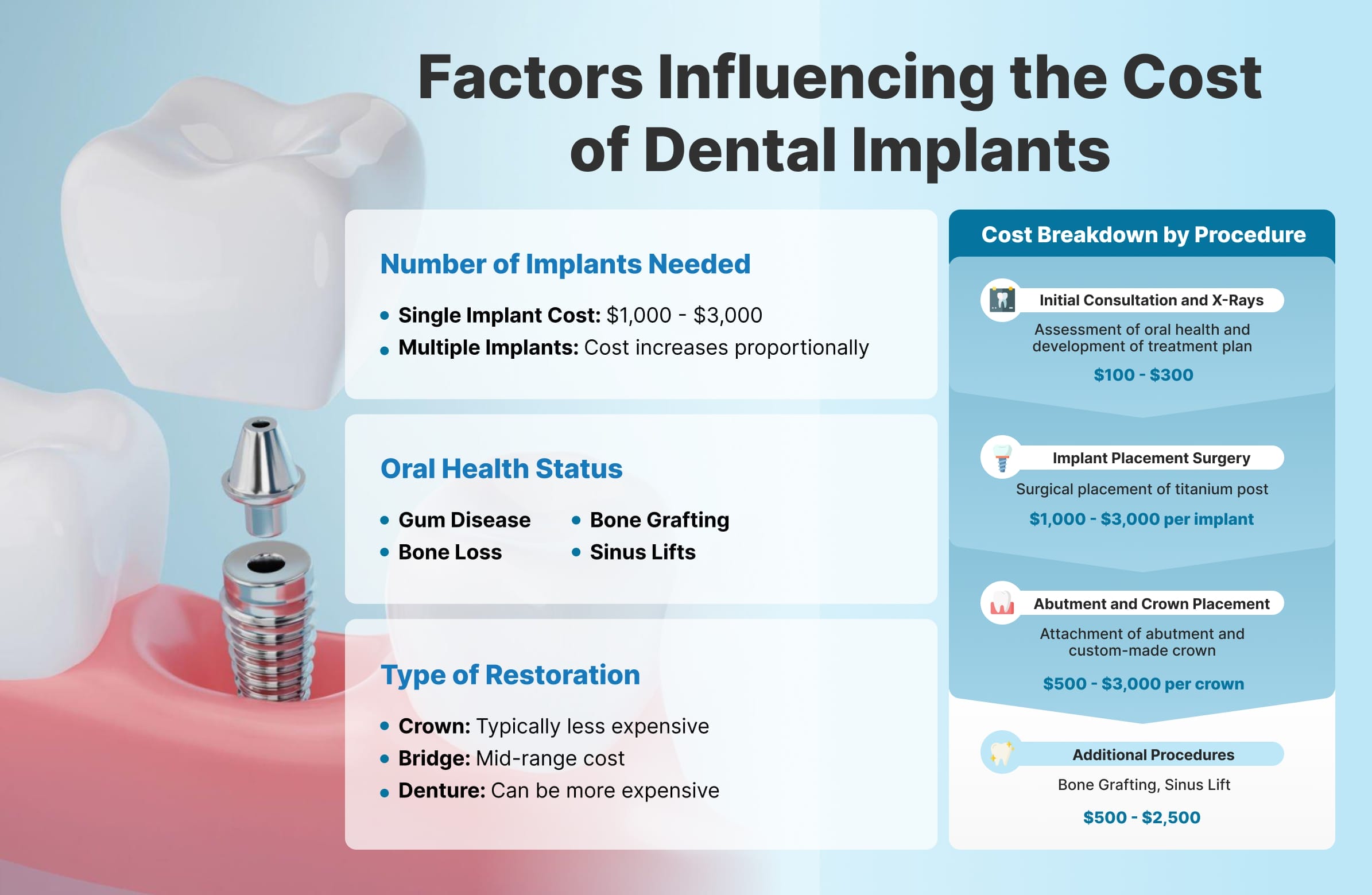10 Easy Facts About Dental Sense Explained
Table of ContentsNot known Incorrect Statements About Dental Sense Little Known Facts About Dental Sense.Dental Sense Fundamentals ExplainedDental Sense Can Be Fun For Anyone
are clinical tools operatively implanted into the jaw to recover a person's capacity to chew or their appearance. They supply assistance for synthetic (fake) teeth, such as crowns, bridges, or dentures. When a tooth is lost because of injury or illness, a person can experience issues such as quick bone loss, defective speech, or modifications to eating patterns that lead to discomfort.Oral implant systems are composed of a dental implant body and dental implant abutment and might additionally include an abutment fixation screw. Front tooth filling. The oral implant body is surgically placed in the jawbone instead of the tooth's root. The dental implant abutment is normally connected to the implant body by the joint fixation screw and expands through gums right into the mouth to support the connected artificial teeth
(https://www.awwwards.com/dentalsense1/)Structure of The Dental Implant System selecting oral implants, talk with your oral service provider about the possible advantages and risks, and whether you are a prospect for the treatment. Points to think about: Your general health is an essential consider figuring out whether you are a good candidate for dental implants, how much time it will require to heal, and for how long the implant may stay in location.
Smoking may influence the healing procedure and lower the lasting success of the dental implant. The healing process for the implant body might take a number of months or longer, throughout which time you commonly have a short-lived abutment instead of the tooth. the dental implant treatment: Thoroughly adhere to the dental health guidelines offered to you by your oral copyright.
A Biased View of Dental Sense
Implant failing can cause the requirement for one more procedure to repair or change the implant system. Restores the capacity to eat Restores cosmetic look Aids keep the jawbone from reducing because of bone loss Protects the health of the bordering bone and gum tissues Helps maintain nearby (nearby) teeth steady Enhances quality of life Damage to bordering natural teeth during dental implant placement Injury to the surrounding cells throughout surgical procedure, such as sinus opening Injury during surgery (as an example, crack of bordering jawbone) Insufficient function, such as seeming like the teeth do not bite with each other typically A sensation that the tooth hangs or turning in position arising from an abutment screw loosening Implant body failure (looseness of the implant body) because of systemic infection, which may be extra most likely in patients with unchecked diabetics issues because of neighborhood infection in bone and periodontals supporting the implant body as a result of postponed recovery, which might be most likely in individuals that smoke Problem cleansing the gums around the dental implant, resulting in bad oral health Without treatment gum disease Post-surgical feeling numb because of nerve impingement or damage Constantly alert health and wellness treatment companies and imaging specialists that you have oral implants prior to any magnetic vibration imaging (MRI) or x-ray treatments.
FDA is not familiar with any type of adverse important source events reported for MRI or x-ray procedures with oral implants. Oral implants systems are usually constructed from materials that comply with worldwide agreement standards of the International Company for Standardization (ISO) or ASTM International. These criteria have information of what makes a secure product.

A dental implant is a framework that changes a missing out on tooth. With screw-like tools, the cosmetic surgeon inserts an implant right into the jawbone, and it acts as a support for a man-made tooth, called a crown.
All About Dental Sense
Some people are not qualified for dental implant surgery. It is for oral surgeons to operate people with: intense illnessuncontrollable metabolic diseasebone or soft cells disease or infectionIf these concerns are resolved, a person can have the surgical procedure. In, dental specialists refrain from running on people with: If people with any one of the above undergo oral implant surgical procedure, there is a higher threat of the dental implant failing.

Dental implant surgery is a customized process. It's not the exact same for everybody. But the adhering to gives a basic introduction of what you can expect your dental expert, dental doctor, periodontist or prosthodontist to do: Position the implant surgically. Offer you time to heal. Affix the message and final crown, bridge or denture.
Next off, your doctor will carefully position the oral implant right into your jaw. If your dental implant is near the front of your mouth, your dental expert will make a momentary tooth for you to wear till you heal.
Dental Sense Fundamentals Explained
Your supplier can tell you what to expect in your scenario. Throughout the healing stage, your jawbone should fuse to the oral implant. This process, called osseointegration, is vital for stability and lasting success. This procedure can take anywhere from 3 to 9 months. Sometimes, it might take much longer.
When your implant heals, your dental professional can affix the joint (tiny connector article) and your last reconstruction (crown, bridge or denture). This generally takes regarding one hour to finish and might call for a second minor surgery. You should not really feel any kind of discomfort throughout your oral implant treatment since your provider will utilize medicine to numb your periodontals.